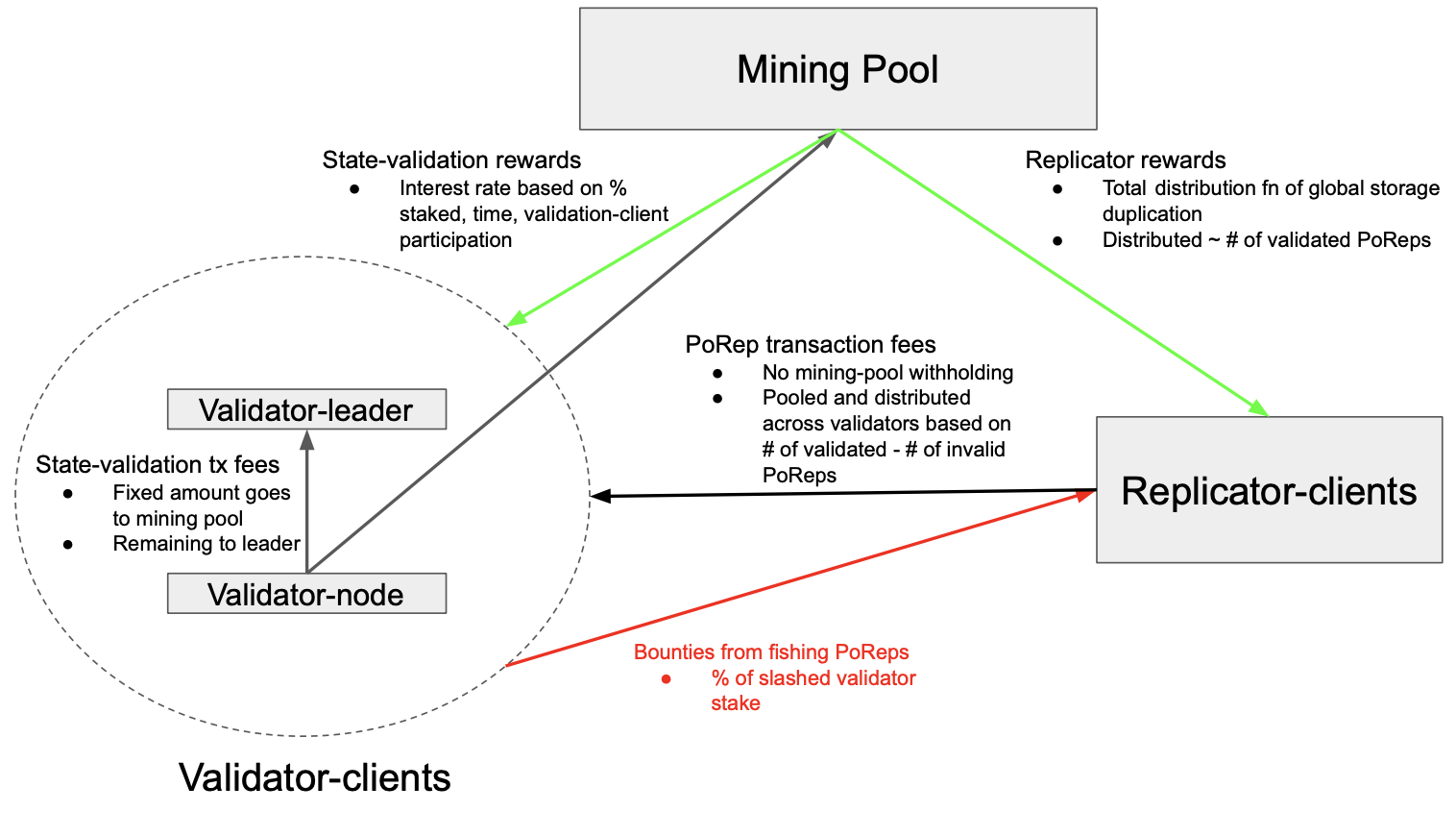4.2 KiB
Economic Design Overview
Solana’s crypto-economic system is designed to promote a healthy, long term self-sustaining economy with participant incentives aligned to the security and decentralization of the network. The main participants in this economy are validation-clients and replication-clients. Their contributions to the network, state validation and data storage respectively, and their requisite remittance mechanisms are discussed below.
The main channels of participant remittances are referred to as protocol-based rewards and transaction fees. Protocol-based rewards are protocol-derived issuances from a network-controlled reserve of tokens (sometimes referred to as the ‘mining pool’). These rewards will constitute the total reward delivered to replication clients and a portion of the total rewards for validation clients, the remaining sourced from transaction fees. In the early days of the network, it is likely that protocol-based rewards, deployed based on predefined issuance schedule, will drive the majority of participant incentives to join the network.
These protocol-based rewards, to be distributed to participating validation and replication clients, are to be specified as annual interest rates calculated per, real-time, Solana epoch [DEFINITION]. As discussed further below, the issuance rates are determined as a function of total network validator staked percentage and total replication provided by replicators in each previous epoch. The choice for validator and replicator client rewards to be based on participation rates, rather than a global fixed inflation or interest rate, emphasizes a protocol priority of overall economic security, rather than monetary supply predictability. Due to Solana’s hard total supply cap of 1B tokens and the bounds of client participant rates in the protocol, we believe that global interest, and supply issuance, scenarios should be able to be modeled with reasonable uncertainties.
Transaction fees are market-based participant-to-participant transfers, attached to network interactions as a necessary motivation and compensation for the inclusion and execution of a proposed transaction (be it a state execution or proof-of-replication verification). A mechanism for continuous and long-term funding of the mining pool through a pre-dedicated portion of transaction fees is also discussed below.
A high-level schematic of Solana’s crypto-economic design is shown below in Figure 1. The specifics of validation-client economics are described in sections: Validation-client Economics, State-validation Protocol-based Rewards, State-validation Transaction Fees and Replication-validation Transaction Fees. Also, the chapter titled Validation Stake Delegation closes with a discussion of validator delegation opportunties and marketplace. The Replication-client Economics chapter will review the Solana network design for global ledger storage/redundancy and replicator-client economics (Storage-replication rewards) along with a replicator-to-validator delegation mechanism designed to aide participant on-boarding into the Solana economy discussed in Replication-client Reward Auto-delegation. The Economic Sustainability section dives deeper into Solana’s design for long-term economic sustainability and outlines the constraints and conditions for a self-sustaining economy. An outline of features for an MVP economic design is discussed in the Economic Design MVP section. Finally, in chapter Attack Vectors, various attack vectors will be described and potential vulnerabilities explored and parameterized.

Figure 1: Schematic overview of Solana economic incentive design.